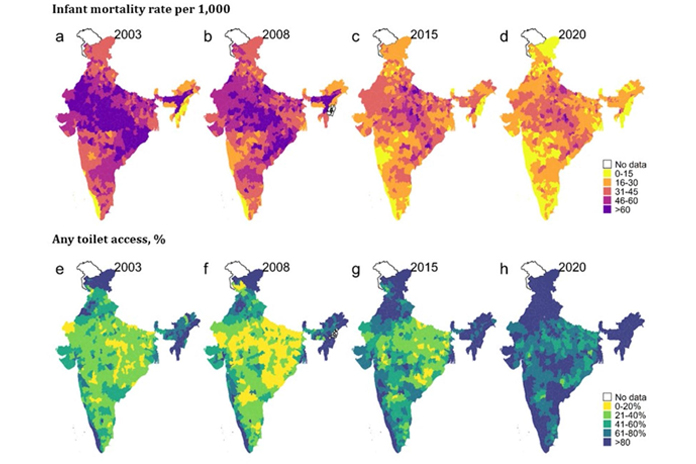
The construction of toilets under the government’s “Swachh Bharat Mission” was a factor in averting around 60,000 to 70,000 infant deaths annually between 2011 and 2020, a new study published in the peer-reviewed journal Nature has found.
In a post on X Thursday, Prime Minister Narendra Modi shared the link to this study. “Happy to see research highlighting the impact of efforts like the Swachh Bharat Mission. Access to proper toilets plays a crucial role in reducing infant and child mortality. Clean, safe sanitation has become a game-changer for public health. And, I am glad India has taken the lead in this,” he wrote.
Researchers from the International Food Policy Research Institute, University of California and Ohio State University conducted a quasi-experimental study to investigate the association between the “Swachh Bharat Mission (SBM)”—India’s national sanitation programme—and infant and under-five mortality rates in India.
They studied infant mortality and under-five mortality data from 35 states and 640 districts between 2011 and 2020.
An author of the paper, Soyra Gune, said most literature on reducing mortality in low and middle-income countries focused on preventative and curative interventions during the prenatal and postnatal period.
“However, scant evidence is available on the association between large-scale investments in sanitation and mortality in these countries,” said the research analyst at the International Food Policy Research Institute.
The mission’s primary objectives were to build household, community and public toilets, including the conversion of insanitary latrines into pour-flush latrines, and develop solid-waste management systems.
Gune said their findings confirmed that improved water and sanitation conditions may reduce infant mortality, particularly in countries like India, where open defecation was highly prevalent.
More toilets, fewer deaths
The research published in Nature on 2 September highlighted that districts with over 30 percent toilets constructed under SBM corresponded with 5.3 lower infant mortality and 6.8 lower under-five mortality rate.
“The post-SBM period in India exhibited accelerated reductions in infant and child mortality compared to the pre-SBM years,” the study read.
The mission was launched in 2014 to make urban centres open-defecation-free and achieve 100 percent scientific management of municipal solid waste in 4,041 statutory towns in the country.
According to the Union Ministry of Housing and Urban Affairs, the second phase of the mission is being implemented, focusing on making Indian cities garbage free by 2026.
While the research makes a direct connection between the availability of sanitation facilities and infant and toddler deaths, earlier studies have also hinted at the “Asian Enigma”—a phenomenon where stubbornly high levels of undernutrition and stunting among children from low and middle-income countries was observed, despite food availability.
Past studies have also noted that open defecation carries “substantial negative externality with respect to infant and child health”.
“Infant and child mortality due to faecal pathogen-based infections (diarrhoea, in particular) and malabsorption of nutrients may decline following improved access to toilets and elimination of open defecation,” the study read.
Stressing the benefits of India’s national sanitation campaign for infant and child mortality reduction, the study said there was “growing evidence linking national sanitation campaigns to improved child health outcomes”.









